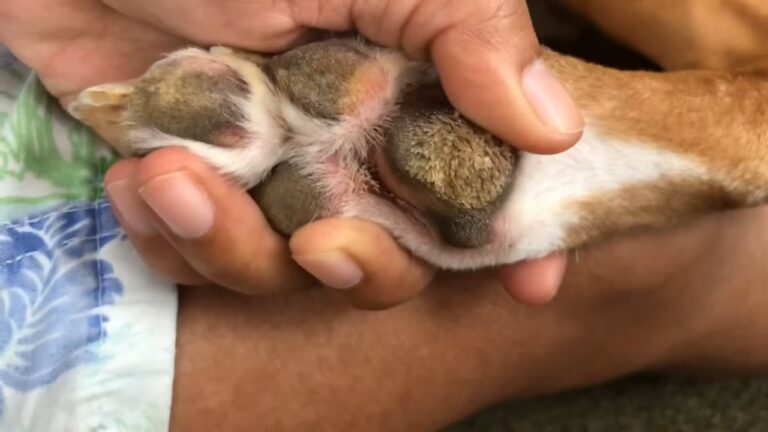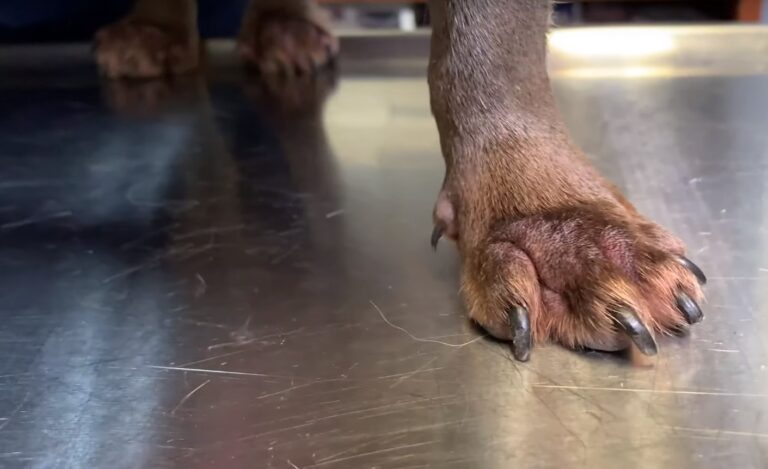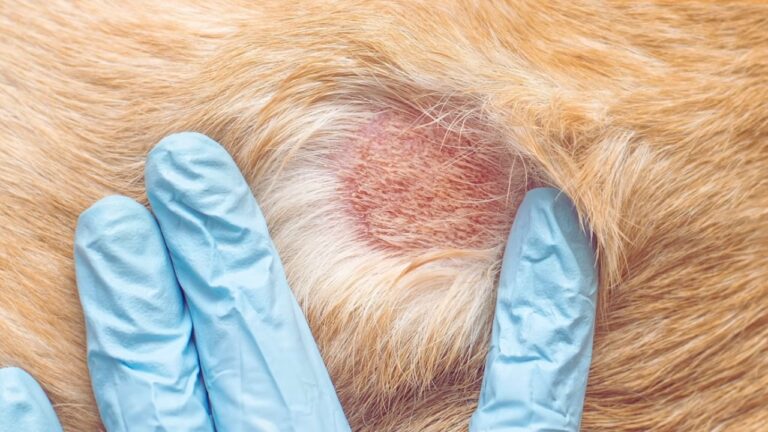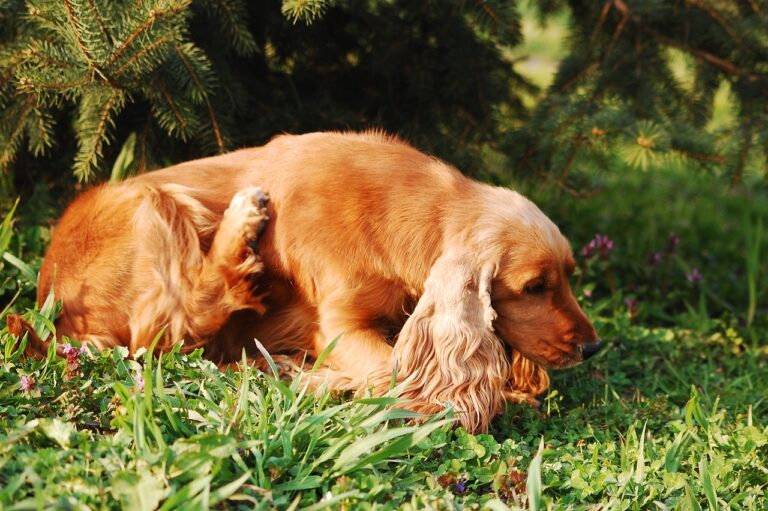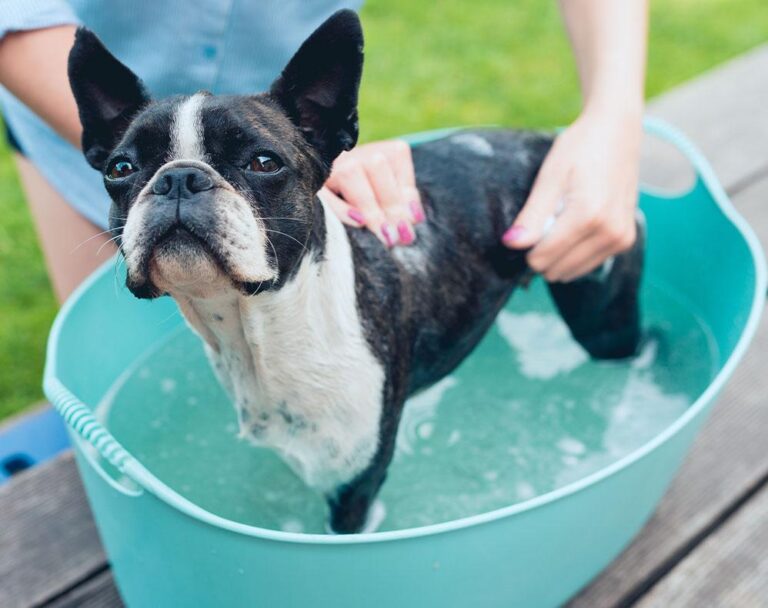We all know our furry buddies just love getting into everything, always exploring the world with such curiosity. But sometimes their adventures can lead to little surprises, like getting a zap from a bee.
Just like us, our pups will feel a sting and start fussing. As owners, it’s our job to know how to handle it when something like that happens. This guide will walk you through the steps to calm them down and make sure they’re okay and comfortable again.
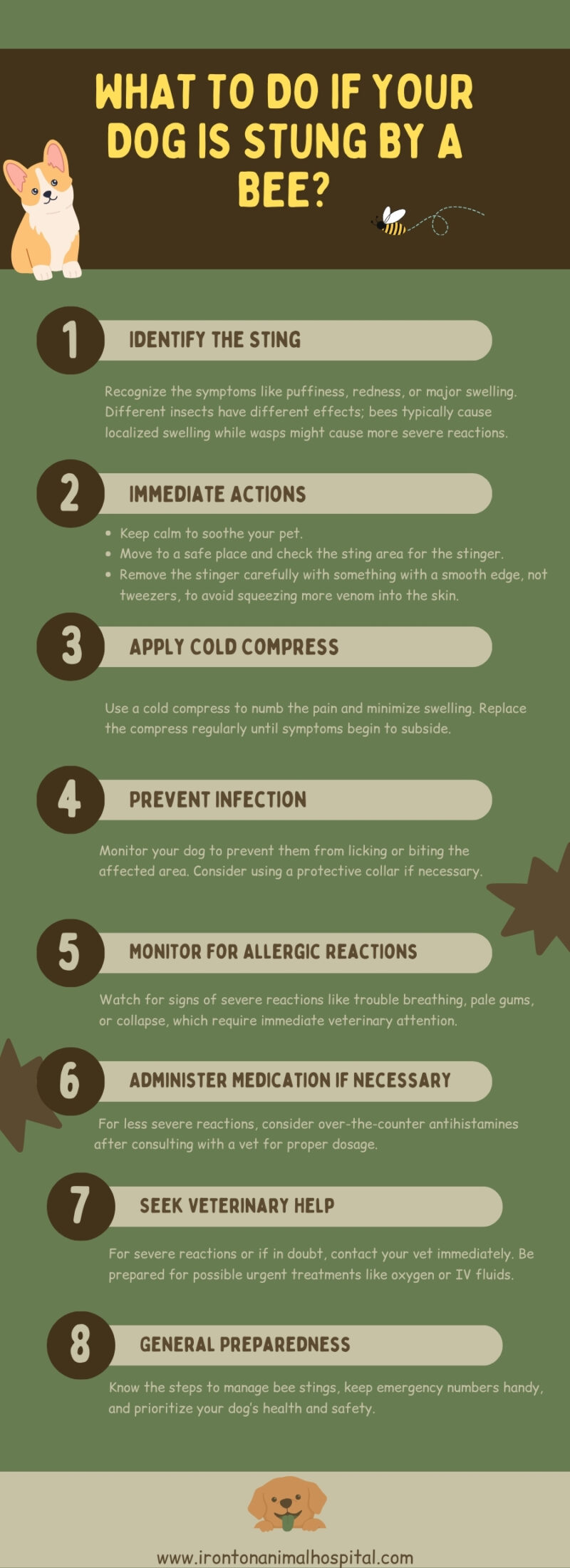
How to Identify the Sting?

Some critters leave different marks after a zap – bees, wasps, fire ants, you name it. Symptoms might range from just a little swelling to really bad reactions too. So it pays to learn each sting’s traits so you recognize what you’re dealing with.
Take bees for example. Usually, their sting means puffiness and redness around the spot. But then you get types like wasps that really lay into Fido. Their zing will cause more major swelling.
Don’t forget, sometimes allergic strikes hit pups extra hard with breathing issues or upset bellies too. That’s when it’s vet time, no doubts asked.
By knowing what to look for, we can judge if it’s just a minor irritation needing love or something needing attention fast.
When outdoor fun takes a turn and our furry friend gets a zinging, keeping a level head is the first step. They’ll be fussing and looking to us for comfort. Staying calm soothes their nerves and reassures everything will be alright.
Next up, safety – get to the shelter, and check for threats. Once clear, look over the sting spot. Sometimes you can spot the cause stuck in. Gently work it free with a smooth edge, not tweezers, being careful not to squeeze out more irritants.
After removal, chill things off with a cold compress. That numbs pain and prevents swelling from getting worse. Renew it regularly as the sting fades. Vets also know medicines that may help if needed.
But watch yourself – dogs in distress have been known to nibble or lick injuries. While we understand why, infections are no good. A snazzy collar shapes them from worries until all is better.
Monitoring for Allergic Reactions
For most stings, the reaction clears up on its own after some local swelling. But dog owners need to know what signs point to needing urgent help.
Sometimes the body can overreact, and that’s when it becomes anaphylaxis. Symptoms like trouble breathing, pale gums, or collapse happen fast. If a dog shows these after a sting, it’s emergency time – their life could be at risk.
Less serious but still concerning is when other issues crop up like diarrhea, vomiting, or rapid heartbeat. In these cases, you might give an over-the-counter antihistamine. Always check with the vet first for the right dosage though.
For severe reactions, waiting can be dangerous. The dog may require oxygen, IV fluids, or other treatments immediately
The Bottom Line
Dealing with bee stings is stressful for any dog owner. But knowing the proper steps to take right away makes a big difference in getting your pup squared away. Make sure you’ve got the basics covered so you can keep them calm and comfortable.
Above all, your dog’s health and safety come first. Don’t hesitate to give the vet a shout if symptoms seem off or if you have any concerns at all.

